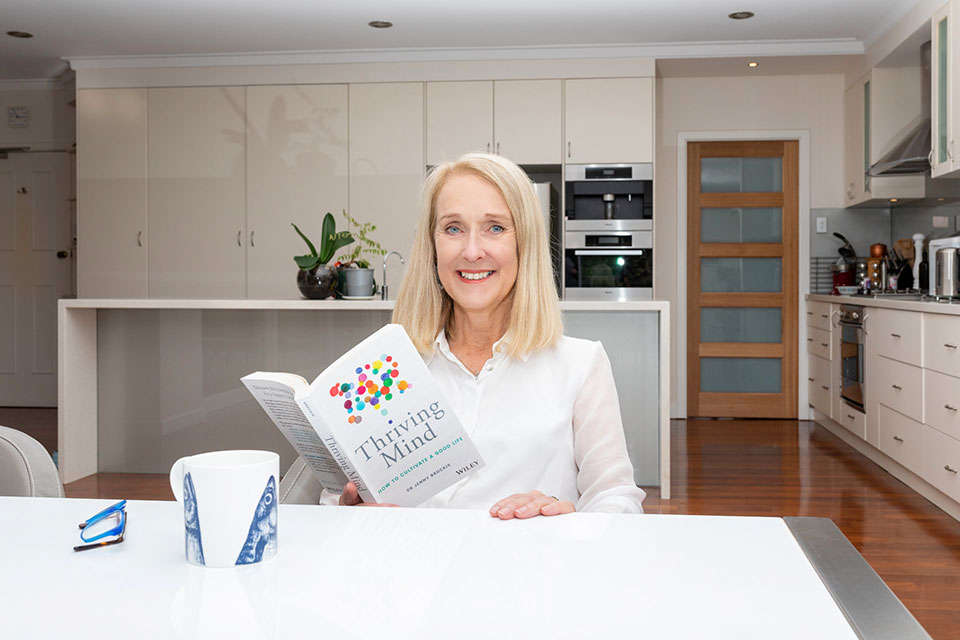7 ways to lead your own effective change

Many of your subconscious habits and automated behaviours, like your ability to drive a car, are enormously helpful; others, such as eating snack foods in front of the goggle box every night ‘to relax’ or smoking to ‘calm your nerves’, are less so. The more you practise your habits and rituals, the stronger and more deeply embedded your neural circuitry becomes.
Whether it’s about feeling better about yourself as a person, feeling happier or more content with what you already have, finding a solution to regaining the vitality and energy you need to power through your day, or understanding your colleagues better, this is about first determining what you want. You are way more powerful than you probably give yourself credit for. As my husband, a diehard Eddie Izzard fan, likes to quip, ‘The power of the force within you is strong’.
The evidence from the science is compelling. You can learn to successfully embed new ways of thinking and doing, to supersede those habits that no longer serve you well, using techniques shown by the research to work. Overcoming the modern maladies of high stress, overwork, mental distress and social disconnection is not only possible; you already have the capability and capacity to make it happen. Here are a few tips to foster success:
Keep the change small
Trying to introduce a radical overhaul of your life all at once is doomed to failure. Starting low and adding one small change at a time will be far less painful and far more successful. James Clear, author of Atomic Habits, recommends 1 per cent improvements. That sounds manageable, doesn’t it?
Augment a pre-existing habit
If you’ve already made an effort to say thank you more often to your friends and colleagues, augmenting your gratitude practice could look like:
- buying coffee or lunch for them
- making it public by posting a thank you online
- writing a personal note or letter of thanks.
Make it evergreen
A lousy habit that gives us no joy is destined for the habit bin. It won’t work. With every new habit you consider, make it attractive, easy, satisfying (you did it!) and obvious. For example, you can see the delicious fruit you bought at the market because you arrange it in your fruit bowl, rather than storing it away in the fridge. Clear defines habits as ‘the compound interest of self- improvement’.
Keep track of it
As with keeping a gratitude journal, monitoring your progress by keeping a written record of it is highly rewarding (dopamine cupcakes for you!) and motivates you to persevere. The Headspace meditation tracker does this by recording how many days in a row you’ve practised your meditation. This is great if, like me, you find it sparks an obsessive determination not to break the chain.
Work to a time frame
Choose a start and finish date and mark them in your calendar where they are visible. I usually suggest allowing 90 days — long enough to establish your new habit and achieve your goal, but not so long that you get bored with your efforts. According to folklore it takes only 21 days to create the beautiful new version of you, but some researchers suggest an average of 66 days depending on the complexity of the desired new habit, the strength of your desire to achieve it, and the support you have to hold you to your word.
Find an accountability buddy
Share your goal for change with your partner, a family friend or a colleague, so they can help keep you accountable. They may even choose to accompany you on your journey. For example, buddy groups for weight loss are more effective than flying solo, and you get to celebrate your wins along the way.
Life is not perfect
You are not perfect, but you are perfectly adapted to follow the path that will enable you to:
- enjoy greater happiness by embracing your full spectrum of emotions, cherishing the positives that come from gratitude, helping others, purpose and meaning, mindfulness and adopting a thriver’s mindset
- relish the energy and vitality that come from greater physical and mental wellbeing and the support crew of nature, music and dance, laughter and play
- savour your ability to form strong relationships that create deep connection and a sense of belonging based on trust, kindness, compassion and empathy.
Are you ready to be the truly happy, thriving human you know you can be?
Edited extract from Thriving Mind: How to Cultivate a Good Life (Wiley) by Dr. Jenny Brockis.
World’s Best (And Worst) Countries For Older People To Live In.
Countries With The Largest Household Size.
The World’s Best Non-Native English Speaking Countries.
Best Countries For Business In Europe For Non-European Investors.
O’Mega superyacht and TITANIA superyacht available for Luxury Superyacht Charter.
Bring the best of the CEOWORLD magazine's global journalism to audiences in the United States and around the world. - Add CEOWORLD magazine to your Google News feed.
Follow CEOWORLD magazine headlines on: Google News, LinkedIn, Twitter, and Facebook.
Copyright 2025 The CEOWORLD magazine. All rights reserved. This material (and any extract from it) must not be copied, redistributed or placed on any website, without CEOWORLD magazine' prior written consent. For media queries, please contact: info@ceoworld.biz








